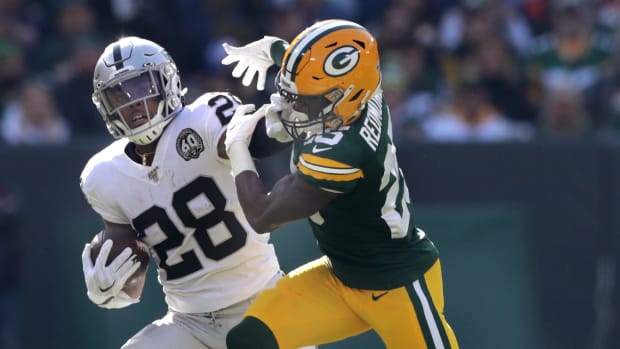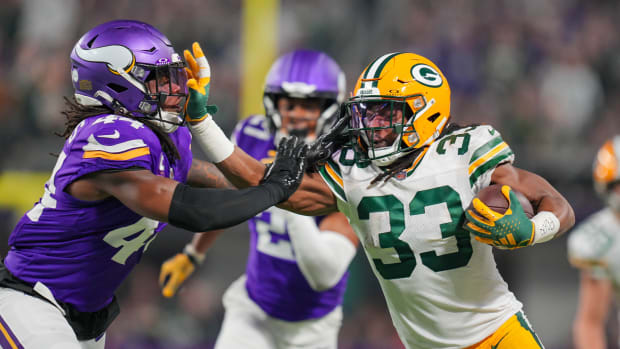Dillon’s Big Quads Didn’t Produce Many Big Runs
GREEN BAY, Wis. – Green Bay Packers running back AJ Dillon’s quads look like they’re about ready to explode.
It’s as if Dillon’s quads have quads. It’s as if they were to touch, they’d have baby quads. And if you were to prick a needle into them, more quads would come pouring out.
For his prodigious combination of size and athleticism, what Dillon was not last season was explosive.
Of the 50 running backs with at least 100 rushes last season, Dillon ranked 50th with a 10-yard run rate of 4.8 percent.
To be sure, Dillon was incredibly effective last season. Football Outsiders’ Success Rate metric is the same as Green Bay’s win/loss grading system. A first-and-10 run that gains 4-plus yards is a win (or a successful run); a first-and-10 run that gains 3 yards is a loss. A second-down run that gets at least half the remaining yardage is a win (or a success), as is any third-down run that picks up the first down.
Dillon’s success rate was an NFL-best 63 percent. His ability to continually get 4 and 5 yards was a tremendous asset to an offense that converted a league-high 90.9 percent of the time on third-and-1.
The next step will be winning that one-on-one, open-field opportunity. That, obviously, will be more important this season because the passing game might not be as capable of producing explosive plays.
“The biggest thing we talked about with those is there were some opportunities right there that we missed on, that could have been big, explosive runs,” running backs coach Ben Sirmans said at the start of organized team activities.
“For us, it’s making sure that everything’s put together from details, footwork, that could have led to bigger plays by him. He’s got that type of ability because he can actually make you miss in the open field. He’s got the ability to put a little juke on you, even for a guy his size, so it’s really just bringing all those different facets of his game, just bringing those attributes together and let him apply them. I think he will have more explosive runs this year.”
While the fate of the team has been tied to Aaron Rodgers for years, research by The 33rd Team shows explosive runs were hugely important to Green Bay’s success. Last season, 34.1 percent of Green Bay’s rushing yards in victories came from explosive runs (defined as 10-plus yards). In losses, that fell to 18.0 percent. That 16.1 percent disparity was one of the largest in the NFL.
Last season, 24 running backs had at least 170 rushes (10 per game). Here are their 10-yard run rates.










